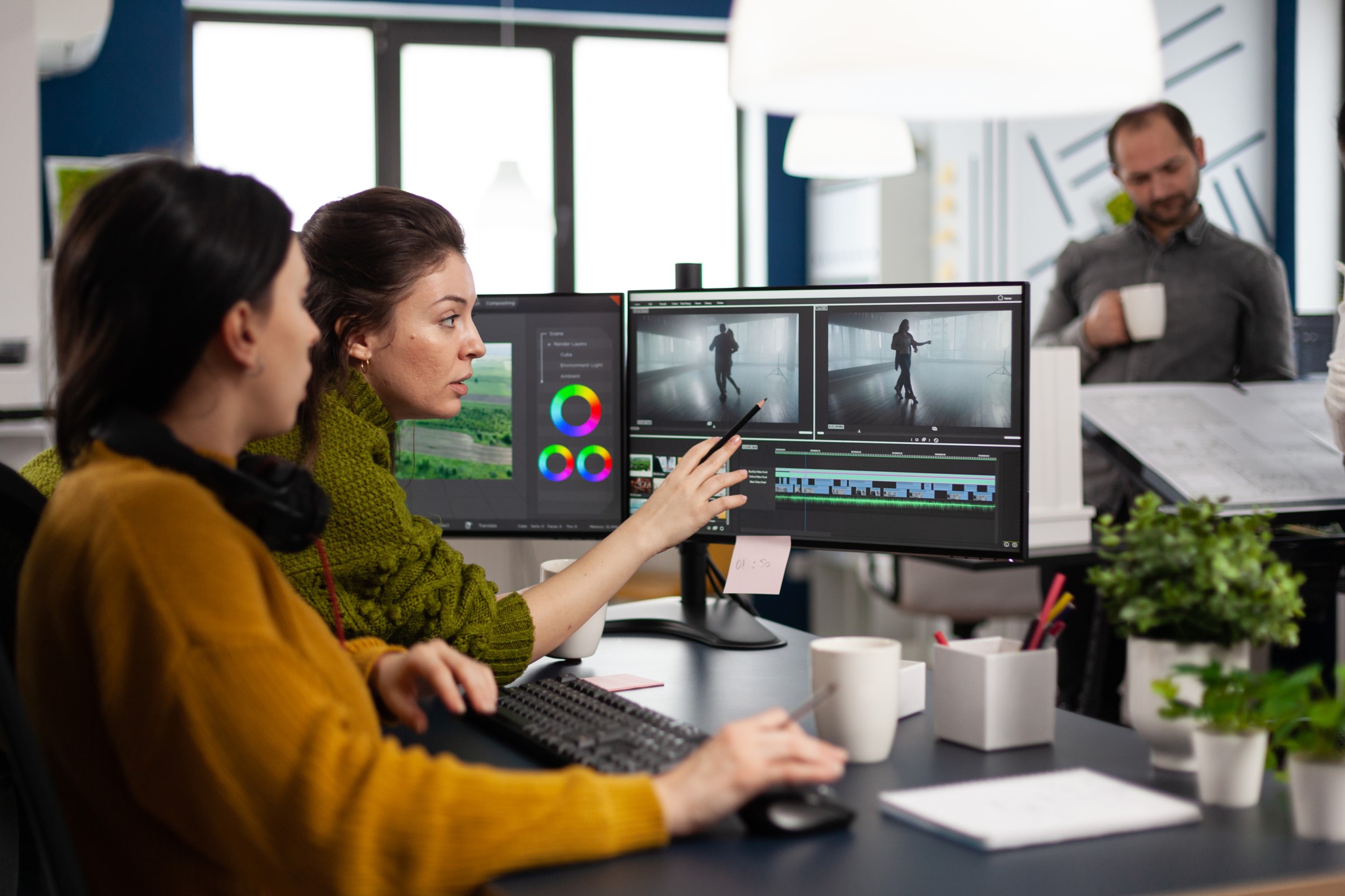Introduction
Post-production is where the magic of filmmaking truly comes to life. It’s the phase where raw footage is transformed into a cohesive narrative, blending visuals, sound, and special effects to deliver the final cinematic masterpiece. However, as audience expectations for high-quality content grow, post-production faces mounting challenges in efficiency, collaboration, and cost control.
Technology is revolutionizing the post-production process, enabling faster workflows, remote collaboration, and groundbreaking creative possibilities. In this blog, we’ll delve into the challenges of traditional post-production, the technologies reshaping the industry, and the trends that are shaping its future.
Challenges in Post-Production
1. Managing Large File Transfers
High-resolution formats like 4K and 8K generate massive amounts of data. Transferring these files between editing, VFX, and sound teams often results in delays and bottlenecks.
2. Fragmented Workflows
Post-production involves multiple teams working on editing, color grading, sound design, and visual effects. Without a centralized system, collaboration becomes disjointed, leading to inefficiencies.
3. Rising Costs
Advanced visual effects and high-quality audio production are expensive. Budget constraints can limit creative possibilities, especially for independent filmmakers.
4. Remote Collaboration Challenges
The rise of remote work has added complexity to coordinating between geographically dispersed teams. Traditional methods of file sharing and feedback are no longer sufficient.
5. Tight Deadlines
The increasing demand for content on streaming platforms has compressed production timelines. Teams often struggle to deliver high-quality results within shorter schedules.
Technologies Transforming Post-Production
1. Cloud-Based Collaboration
Cloud platforms like Frame.io and EditShare have revolutionized how post-production teams work together. These tools allow real-time collaboration, enabling editors, directors, and producers to review and approve changes from anywhere.
-
Version Control: Ensures everyone is working on the latest files, reducing confusion.
-
Seamless Integration: Compatible with popular editing software like Adobe Premiere Pro and Avid Media Composer.
2. AI-Driven Editing
Artificial intelligence is streamlining repetitive tasks and enhancing creative workflows.
-
Automated Editing: Tools like Runway ML can identify key moments in raw footage and generate rough cuts, saving hours of manual effort.
-
Content-Aware VFX: AI algorithms remove objects, stabilize shots, and track motion with unprecedented precision.
-
Audio Enhancement: AI-powered tools like Adobe Podcast clean up noisy audio and enhance clarity with minimal user intervention.
3. Real-Time VFX Integration
Advancements in real-time rendering are bridging the gap between production and post-production. Using game engines like Unreal Engine, filmmakers can visualize effects during shooting, reducing reliance on post-production fixes.
-
Virtual Sets: Real-time VFX allows actors to perform against dynamic backdrops, eliminating green screens in many cases.
-
Iterative Design: Directors can tweak effects instantly, ensuring creative alignment during production.
4. Blockchain for Asset Management
Blockchain technology is transforming asset tracking and rights management in post-production.
-
Transparent Workflow: Tracks every edit, effect, and sound added to the project, ensuring accountability.
-
Copyright Protection: Provides a secure record of ownership and usage rights for digital assets.
5. Remote Render Farms
High-powered render farms hosted in the cloud are reducing the time needed for complex visual effects and animations.
-
Scalable Solutions: Platforms like AWS Thinkbox provide on-demand rendering capacity.
-
Cost Efficiency: Pay-as-you-go models make advanced rendering accessible to smaller productions.
Case Studies: Innovative Use of Post-Production Technology
1. "The Irishman" (2019)
Martin Scorsese’s epic film utilized advanced de-aging technology for its lead actors. AI algorithms analyzed archival footage to create realistic younger versions of Robert De Niro and Al Pacino.
2. "Avengers: Endgame" (2019)
Marvel’s blockbuster heavily relied on cloud-based VFX workflows. With teams spread across the globe, cloud platforms facilitated seamless collaboration and integration of CGI elements.
3. Independent Films and SaaS Tools
Indie productions like The Last Tree have successfully used affordable SaaS tools like DaVinci Resolve for professional-grade color grading, proving that high-quality post-production is no longer exclusive to big studios.
Future Trends in Post-Production
1. Virtual Reality (VR) Editing
VR editing tools will allow filmmakers to step inside their projects, manipulating elements in three-dimensional space. This will revolutionize how editors interact with footage, especially for immersive formats.
2. AI-Powered Storyboarding
AI tools will soon bridge the gap between storyboarding and editing, automatically aligning raw footage to pre-visualized sequences. This will enable faster decision-making and more accurate storytelling.
3. Decentralized Workflows
As global collaboration becomes the norm, decentralized systems will dominate post-production. Blockchain-based platforms will ensure secure data sharing and transparent workflows.
4. Augmented Reality (AR) Previews
AR technology will allow directors to preview VFX and color grades on set, providing instant feedback and reducing post-production revisions.
5. Real-Time Audio Processing
Advances in real-time audio technology will enable sound designers to mix and master tracks during editing, significantly shortening post-production timelines.
SaaS Platforms Transforming Post-Production
Here are some standout SaaS tools making waves in post-production:
-
Frame.io: Real-time collaboration and review for editing teams.
-
DaVinci Resolve: Comprehensive tool for color grading, editing, and VFX.
-
Avid Media Composer: Industry-standard editing software with robust remote collaboration features.
-
Runway ML: AI-powered tool for automated editing and VFX.
-
Adobe Creative Cloud: Suite of tools for editing, sound design, and motion graphics.
Conclusion
Post-production is no longer confined to physical studios or isolated workflows. With the rise of cloud-based platforms, AI-driven tools, and real-time rendering, filmmakers have access to unprecedented levels of creative freedom and efficiency. These advancements not only enhance the quality of the final product but also democratize access to professional-grade post-production for filmmakers of all scales. As the industry continues to evolve, embracing these technologies will be key to creating compelling, high-quality cinema.

